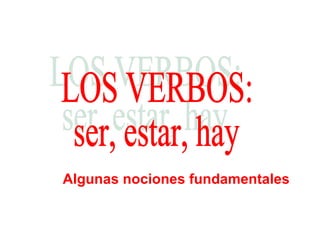Melden
Teilen

Empfohlen
Weitere ähnliche Inhalte
Empfohlen
Empfohlen (20)
Product Design Trends in 2024 | Teenage Engineerings

Product Design Trends in 2024 | Teenage Engineerings
How Race, Age and Gender Shape Attitudes Towards Mental Health

How Race, Age and Gender Shape Attitudes Towards Mental Health
AI Trends in Creative Operations 2024 by Artwork Flow.pdf

AI Trends in Creative Operations 2024 by Artwork Flow.pdf
Content Methodology: A Best Practices Report (Webinar)

Content Methodology: A Best Practices Report (Webinar)
How to Prepare For a Successful Job Search for 2024

How to Prepare For a Successful Job Search for 2024
Social Media Marketing Trends 2024 // The Global Indie Insights

Social Media Marketing Trends 2024 // The Global Indie Insights
Trends In Paid Search: Navigating The Digital Landscape In 2024

Trends In Paid Search: Navigating The Digital Landscape In 2024
5 Public speaking tips from TED - Visualized summary

5 Public speaking tips from TED - Visualized summary
Google's Just Not That Into You: Understanding Core Updates & Search Intent

Google's Just Not That Into You: Understanding Core Updates & Search Intent
The six step guide to practical project management

The six step guide to practical project management
Beginners Guide to TikTok for Search - Rachel Pearson - We are Tilt __ Bright...

Beginners Guide to TikTok for Search - Rachel Pearson - We are Tilt __ Bright...
Ser estar hay
- 4. ÍNDICE: • El verbo ser • El verbo estar • El verbo hay
- 5. Describe y define: (¿cómo?, ¿qué?…) - personas - lugares - cosas SER ESTAR Expresa ubicación: (¿dónde?) - Lugar físico - Lugar geográfico HAY Expresa existencia: (¿qué?, ¿quién?) - personas - lugares - cosas
- 7. EL VERBO SER
- 8. Ser o no ser… ¡Esa es la cuestión!
- 9. verbo SER Yo soy Jose Tú eres polaco Él, ella es alto y ella es rubia Usted Nosotros / as somos católicos Vosotros / as sois futbolistas Ellos, ellas son budistas Ustedes
- 10. Usos del verbo SER: Describe y define: - personas - lugares - cosas SER
- 11. Usos del verbo SER: • Nombre • Nacionalidad • Procedencia • Profesión • Confesión religiosa • Características físicas • Color • Hora SER +
- 12. SER + nombre: Él es Adam Małysz Ellos son los Reyes Juan Carlos y Sofía
- 13. SER + nacionalidad: Tú eres polaco Nosotros somos españoles
- 14. SER + procedencia: Vosotros sois de Warszawa Yo soy de Zaragoza
- 15. SER + profesión: Vosotros sois futbolistas Tú eres profesora
- 16. SER + confesión religiosa: Nosotros somos católicos Ellos son budistas
- 17. SER + características físicas: Él es alto y yo soy bajo Ellas son rubia, castaña y morena Él es joven y yo mayor
- 18. SER + color: El coche es blanco La pizarra es verdeEl tren es amarillo y azul La mochila es roja
- 19. SER + hora: Son las cinco y diez Es la una en punto
- 21. EL VERBO ESTAR
- 23. verbo ESTAR Yo estoy Tú estás Él / ella está Usted Nosotros / as estamos Vosotros / as estáis Ellos / ellas están Ustedes
- 24. Usos del verbo ESTAR: Expresa ubicación: (¿dónde?) - Lugar físico - Lugar geográfico ESTAR
- 25. Usos del verbo ESTAR: • Lugar físico • Lugar geográfico • Acción en progreso • Expresiones de idioma • Estado físico o emocional (no permanente) +ESTAR
- 26. ESTAR + localización física: El gato (está) sobre el tejado caliente El violinista (está) en el tejado
- 27. ESTAR + localización física: La médico está en el hospital Los futbolistas están en el campo
- 28. ESTAR + localización geográfica: Madrid está en España Varsovia está en Polonia
- 29. ESTAR + estados físicos: (NO PERMANENTES) ¿Cómo estás? Estoy muy bien, gracias. ¿Cómo está usted? Muy bien, gracias.
- 30. ESTAR + estados físicos: (NO PERMANENTES) Juan está cansado El niño está enfermo
- 31. ESTAR + estados emocionales: (NO PERMANENTES) Clara está contenta Iker está preocupado
- 32. ESTAR + físicos o emocionales: (NO PERMANENTES) Estar cansado Estar enfermo Estar contento Estar preocupado … … … …
- 34. EL VERBO HAY
- 35. En el gimnasio hay algunas personas muy interesantes… ¿sí?
- 36. Usos del verbo HAY: Expresa existencia: (¿qué?, ¿quién?) - Personas - Lugares - Cosas ESTAR HAY
- 37. HAY + personas: ESTAR Hay un hombre haciendo yoga En el Liceo hay algunos estudiantes felices
- 38. En México hay algunos volcanes muy altos HAY + lugares:
- 39. A veces en el cielo hay muchos aviones que vuelan muy alto HAY + cosas:
- 42. Describe y define: (¿cómo?, ¿qué?…) - personas - lugares - cosas SER ESTAR Expresa ubicación: (¿dónde?) - Lugar físico - Lugar geográfico HAY Expresa existencia: (¿qué?, ¿quién?) - personas - lugares - cosas